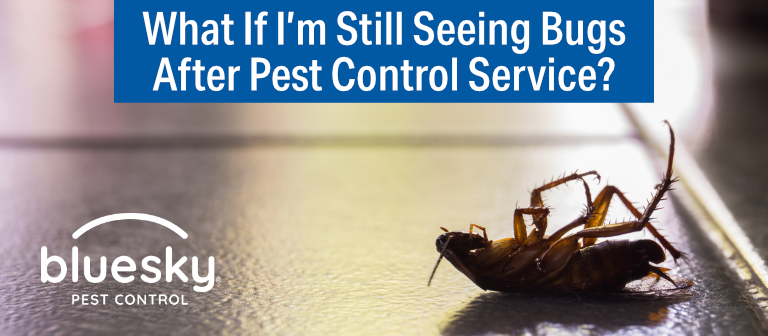4 Easy Facts About Eco Bed Bug Exterminators Dc Described
Wiki Article
Top Guidelines Of Eco Bed Bug Exterminators Dc
Table of ContentsUnknown Facts About Eco Bed Bug Exterminators DcThe Greatest Guide To Eco Bed Bug Exterminators DcThe Basic Principles Of Eco Bed Bug Exterminators Dc The Eco Bed Bug Exterminators Dc PDFs3 Simple Techniques For Eco Bed Bug Exterminators Dc
Because chemicals are harmful, they are likewise potentially dangerous to human beings, pets, other microorganisms, and the setting. Individuals who utilize chemicals or on a regular basis come in contact with them have to recognize the relative poisoning, possible health results, and preventative actions to minimize exposure to the products they make use of. Hazard, or threat, of utilizing pesticides is the potential for injury, or the degree of threat associated with utilizing a chemical under an offered set of conditions.
However, applicators can lessen or nearly remove direct exposure-- and hence minimize danger-- by complying with the label directions, utilizing individual safety apparel and tools (PPE), and handling the pesticide correctly. More than 95 percent of all chemical exposures come from dermal exposure, mainly to the hands and lower arms. By putting on a pair of unlined, chemical-resistant handwear covers, this sort of direct exposure can be virtually eliminated.
The hazardous impacts that occur from a solitary exposure by any kind of course of access are termed "intense results." The 4 courses of exposure are dermal (skin), inhalation (lungs), oral (mouth), and the eyes. Acute poisoning is figured out by checking out the dermal poisoning, inhalation poisoning, and oral poisoning of guinea pig.
How Eco Bed Bug Exterminators Dc can Save You Time, Stress, and Money.
Intense poisoning is measured as the quantity or focus of a toxicant-- the a.i.-- required to kill 50 percent of the pets in an examination populace. This measure is typically shared as the LD50 (dangerous dosage 50) or the LC50 (deadly concentration 50). Furthermore, the LD50 and LC50 values are based upon a solitary dose and are videotaped in milligrams of chemical per kg of body weight (mg/kg) of the guinea pig or in components per million (ppm).The reduced the LD50 or LC50 value of a pesticide product, the higher its poisoning to people and animals. Chemicals with a high LD50 are the least harmful to human beings if made use of according to the directions on the item label. The persistent poisoning of a chemical is figured out by subjecting test pets to long-term direct exposure to the active ingredient.
The chronic toxicity of a chemical is harder than intense toxicity to establish via laboratory evaluation. Products are categorized on the basis of their loved one intense toxicity (their LD50 or LC50 values). Chemicals that are identified as extremely toxic (Toxicity Classification I) on the basis of either oral, facial, or inhalation toxicity should have the signal words risk and poisonous substance published in red with a head and crossbones icon prominently showed on the front panel of the plan label.
The severe (single dosage) dental LD50 for pesticide items in this team varies from a trace amount to 50 mg/kg. As an example, exposure of a few declines of a material taken by mouth might be fatal to a 150-pound person. Some chemical products have simply the signal word threat, which tells you absolutely nothing concerning the acute poisoning, just that the item can trigger severe eye damages or severe skin irritation
Excitement About Eco Bed Bug Exterminators Dc
In this classification, the severe oral LD50 varieties from 50 to 500 mg/kg. A teaspoon to an ounce of this product could be fatal to a 150-pound individual (bed bug heat treatment). Chemical items classified as either somewhat poisonous or relatively harmless (Toxicity Classifications III and IV) are called for to have the signal word CAUTION on the chemical label
All pesticide toxicity chemical, including the Consisting of, can be found on discovered product's Item Safety Product Security InformationMSDS). Chemical labels and MSDS can be acquired from stores or makes - https://businesslistingplus.com/profile/ecobedbug3xt/. The signs of pesticide poisoning can vary from a light skin inflammation to coma or even death.
People additionally differ in their level of sensitivity to different levels of these chemicals. Some people may show no reaction to an exposure that might trigger serious disease in others (bed bug spray). Due to potential wellness problems, chemical individuals and handlers should recognize the usual signs and signs and symptoms of pesticide poisoning. The results, or signs and symptoms, of pesticide poisoning can be generally defined as either topical or systemic.
The Buzz on Eco Bed Bug Exterminators Dc
Dermatitis, or inflammation of the skin, is approved as the most frequently reported topical result related to chemical direct exposure. Signs of dermatitis array from reddening of the skin to breakouts and/or sores. Some people have a tendency to cough, wheeze, or sneeze when exposed to pesticide sprays. Some individuals react to the strong odor and irritating effects of petroleum distillates used as service providers in pesticide products.
This symptom typically subsides within a few mins after an individual is gotten rid of from the direct exposure to the irritant. A response to a pesticide item that triggers somebody not only to sneeze and cough but also to develop severe intense respiratory link system signs is much more most likely to be a true hypersensitivity or allergic response.
Systemic effects are quite various from topical effects. They usually happen away from the initial point of call as an outcome of the pesticide being taken in into and dispersed throughout the body. Systemic impacts typically include queasiness, vomiting, tiredness, migraine, and digestive conditions. In advanced poisoning cases, the person may experience changes in heart rate, problem breathing, convulsions, and coma, which could cause fatality.
Report this wiki page